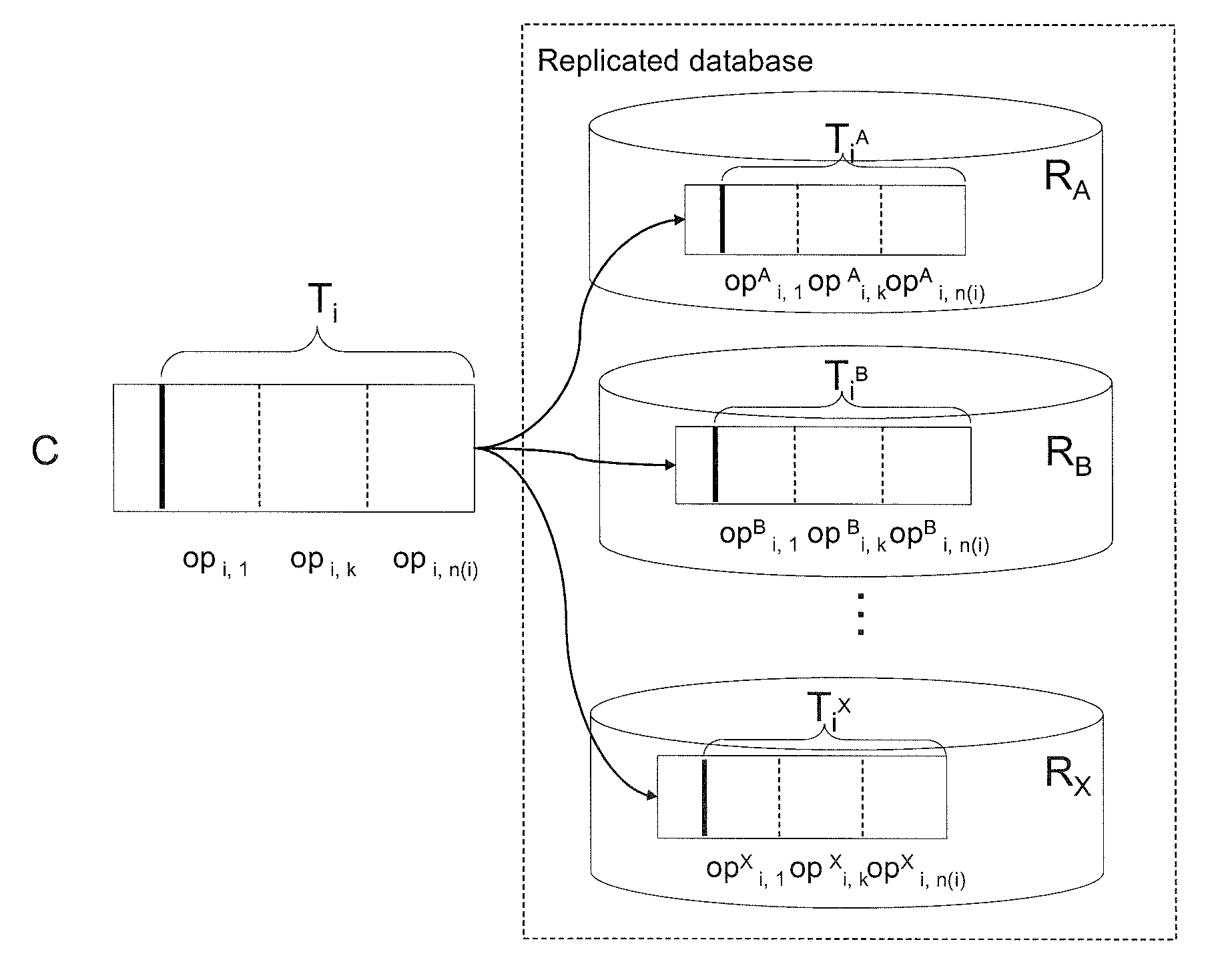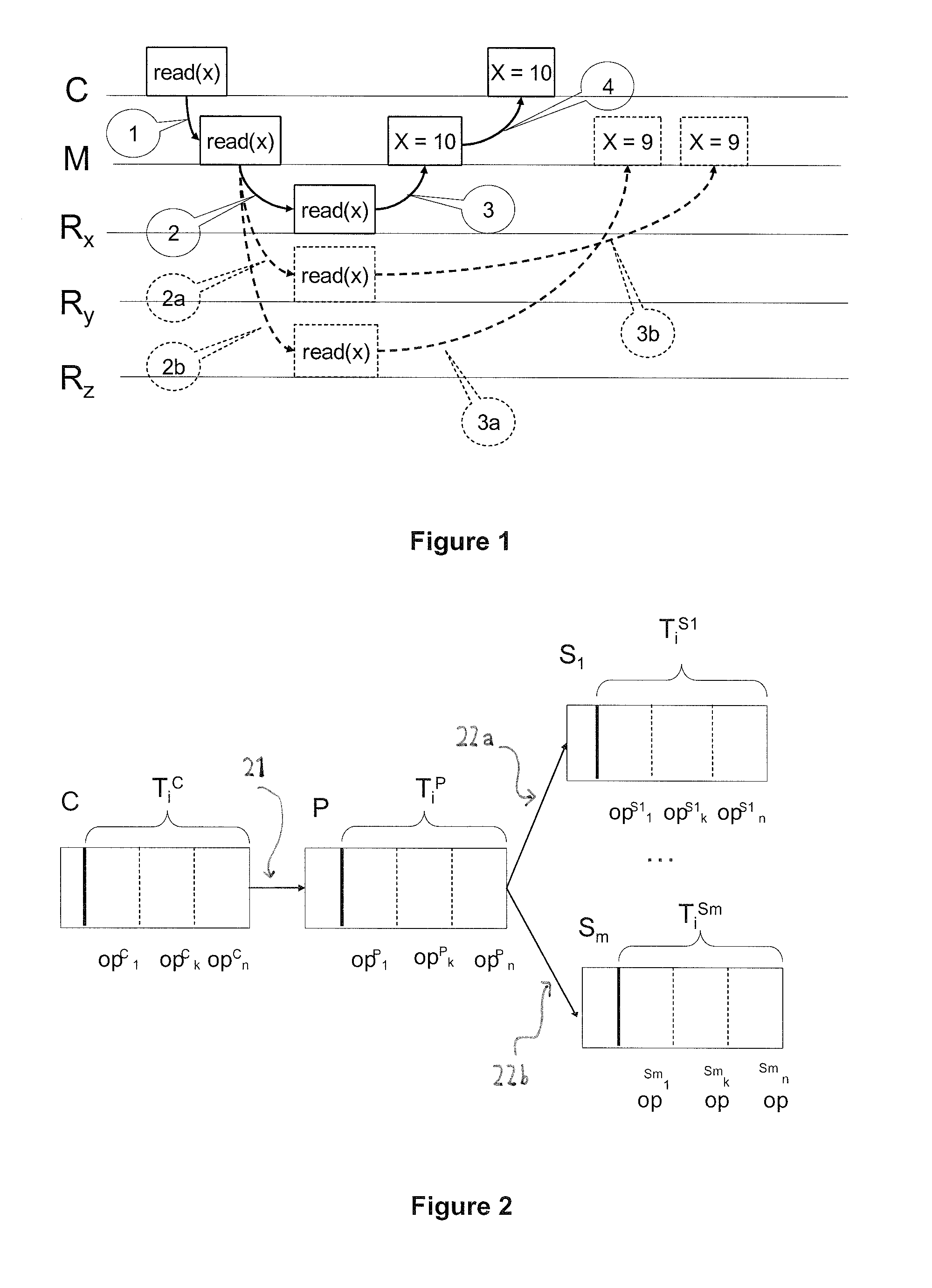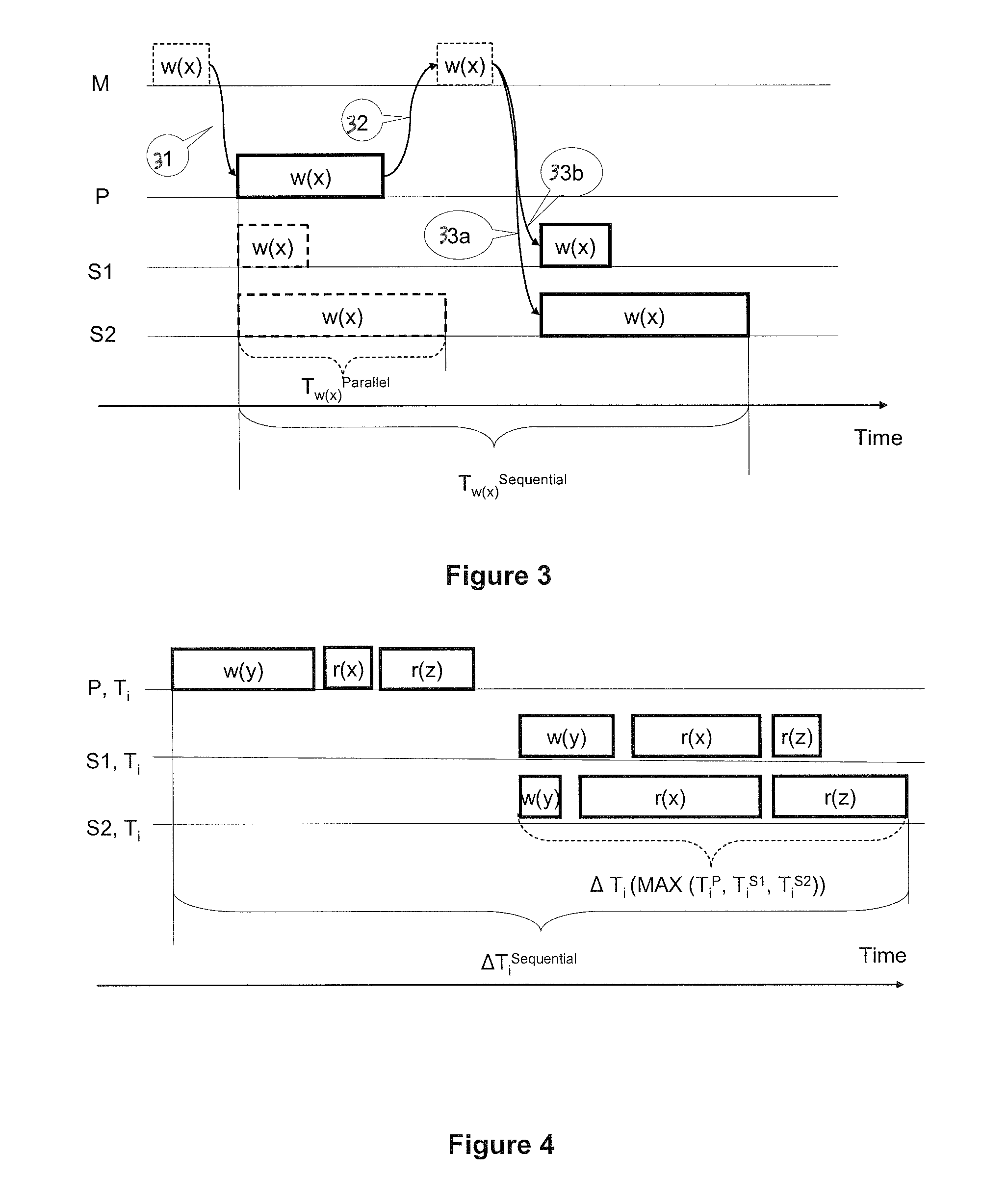Database replication
- Summary
- Abstract
- Description
- Claims
- Application Information
AI Technical Summary
Benefits of technology
Problems solved by technology
Method used
Image
Examples
Embodiment Construction
[0051]An embodiment of an approach to database replication will now be described, for which diverse (i.e. different by design, developed by different software vendors) relational database management systems (RDBMSs) are used which offer snapshot isolation between concurrent transactions. This is a departure from the prior art, where non-diverse databases have always been considered to be adequate for database replication, in order to cope with the software failures and guarantee consistency of the data on all replicas. Database replication assumed in the present embodiment is of “share nothing” type, where each RDBMS interacts with its own, full copy of the database. This is in contrast to some widespread commercial solutions such as Real Application Cluster (RAC) from Oracle (http: / / www.oracle.com / technology / products / database / clustering / index.html) which uses “share all” approach, where one copy of the database is shared by a cluster of RDBMSs. In this embodiment database transacti...
PUM
 Login to View More
Login to View More Abstract
Description
Claims
Application Information
 Login to View More
Login to View More - R&D
- Intellectual Property
- Life Sciences
- Materials
- Tech Scout
- Unparalleled Data Quality
- Higher Quality Content
- 60% Fewer Hallucinations
Browse by: Latest US Patents, China's latest patents, Technical Efficacy Thesaurus, Application Domain, Technology Topic, Popular Technical Reports.
© 2025 PatSnap. All rights reserved.Legal|Privacy policy|Modern Slavery Act Transparency Statement|Sitemap|About US| Contact US: help@patsnap.com



